Hi, everyone! Another interesting novelty arrived for the review – the Midea M7 Pro robot vacuum cleaner. At a cost of $250-300, this robot has a lidar for navigation, a powerful engine that develops suction power up to 4000 Pa according to the manufacturers, as well as a special vibration mop that allows the robot to wipe hard dirt more thoroughly from the floor. The result is a duet of a powerful robot vacuum cleaner and floor polisher. Quite an interesting solution that can seriously compete in the market if the efficiency of the robot is confirmed in real conditions. Next, we will review and test the Midea M7 Pro, after which we will express our opinion whether this robot vacuum cleaner is worth buying. So, let’s go!
Equipment
The robot vacuum cleaner arrived packed in this branded box:

In addition to the robot itself, box contains:
- Charging base.
- Wire for connecting the base to the network.
- Wet cleaning nozzle with attached microfiber mopping pad.
- Vibrating mop module.
- Guide for connecting the robot to the network and operating instructions.
- Spare HEPA filter.
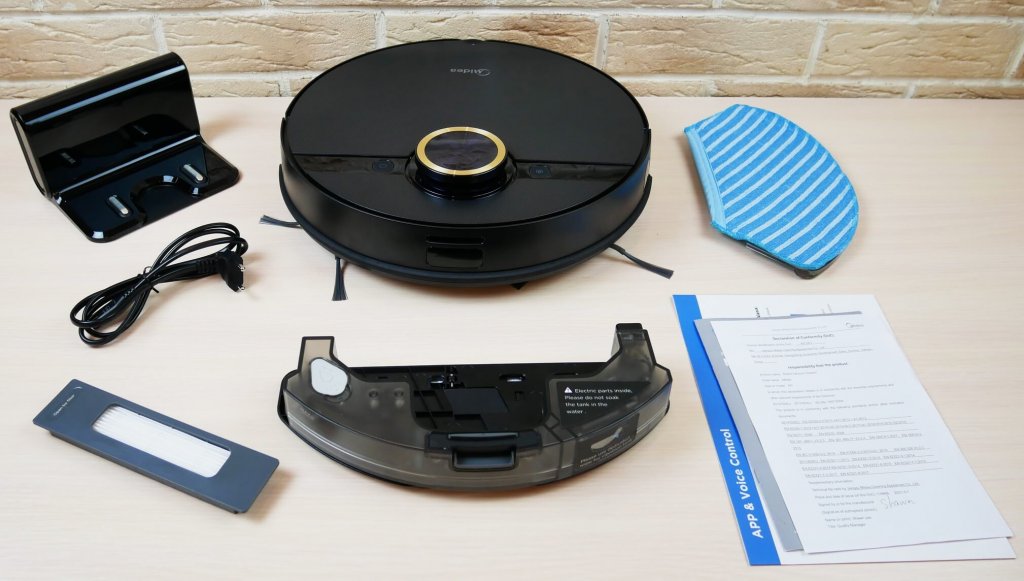
Equipment set is very basic. Of the spare consumables, there is only a filter; spare mopping pads and side brushes are not included.
Design
Now let’s have a look how the robot vacuum cleaner is designed. Midea M7 Pro is made in black color. The lidar is highlighted with a gold edging, which makes the robot more stylish.

Wall detection sensors are installed on the mechanical bumper on both sides. A system of sensors is installed in the center to detect obstacles on the path of the robot. An additional pair of sensors is installed on both sides of the robot closer to the back side, next to the air vents. In total, there are about 30 sensors on board the robot to help navigate in space.
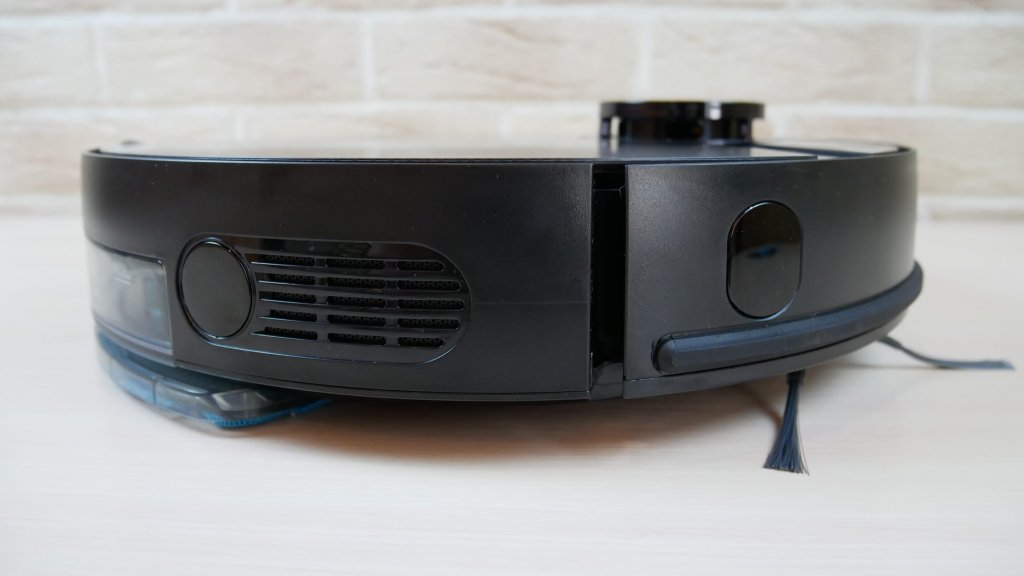
On top of the case there are 2 mechanical control buttons: forced return to the base for charging and start / pause. The lidar is equipped with a mechanical button that prevents the robot from getting stuck under furniture.
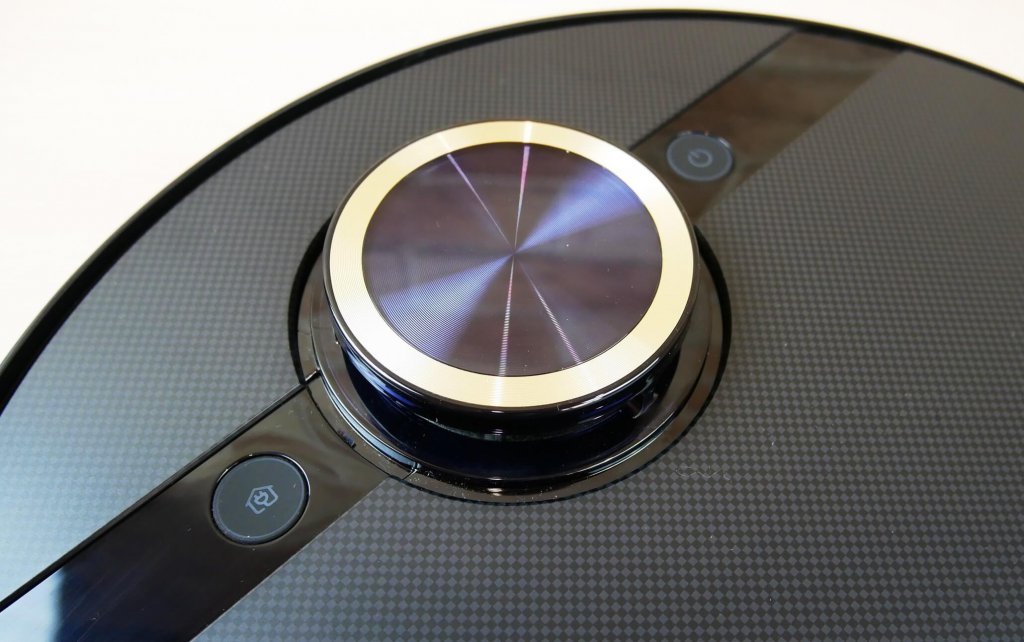
The dust collector is located under the top cover. Next to it is a button to reset the Wi-Fi connection.
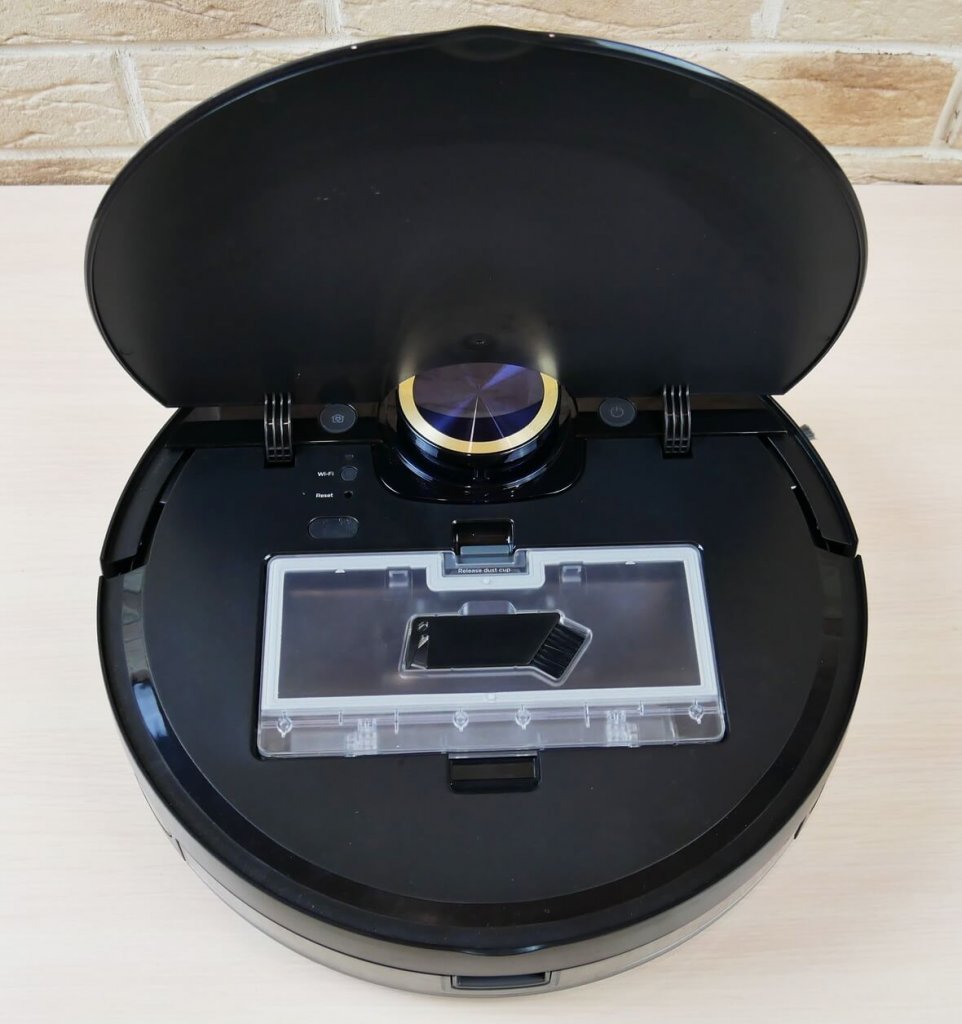
The container holds up to 450 ml of dry waste. On top of the lid, a brush for cleaning the dust collector and the central brush is compactly stored. Filtration system based on HEPA, foam, and mesh filter. This is a plus.
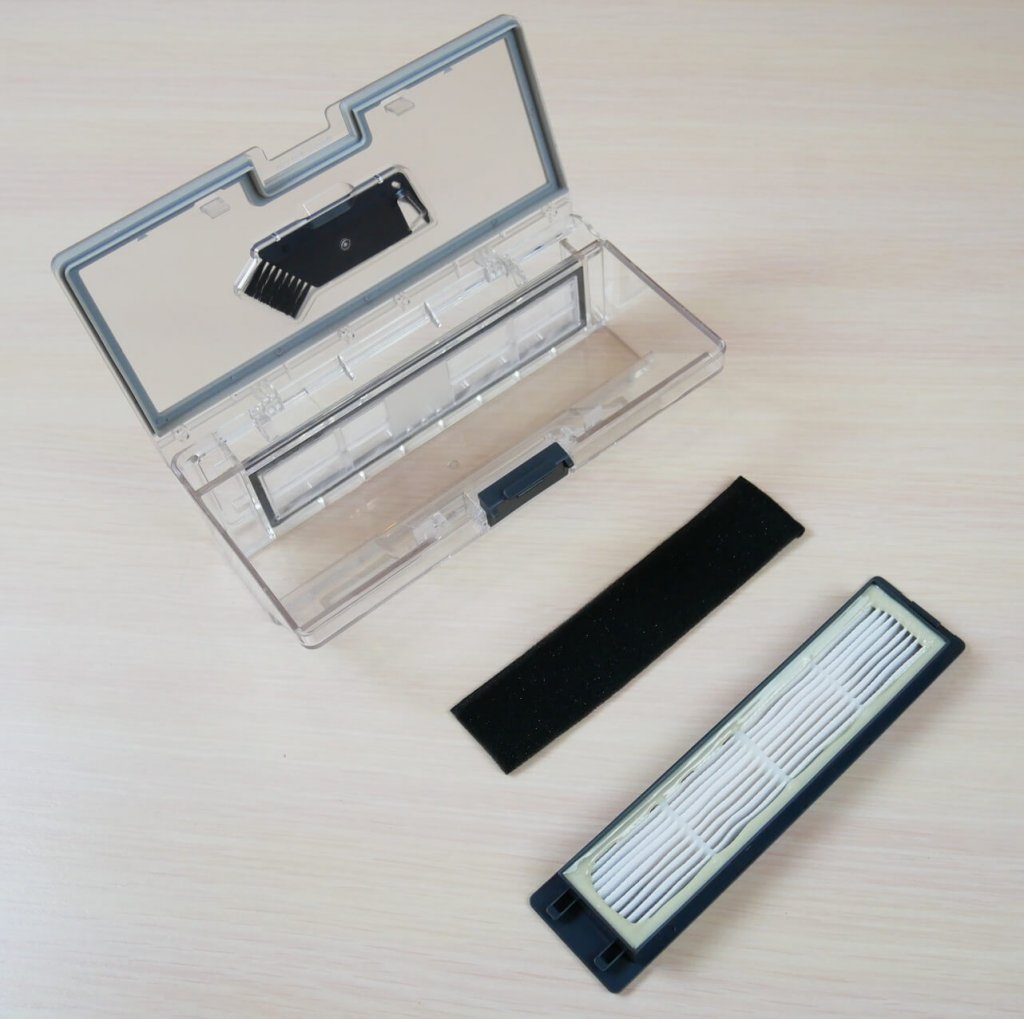
The water tank is installed at the back. It holds about 220-250 ml of water, well, the information is different everywhere. Inside there is a pump for electronic regulation of the water supply.
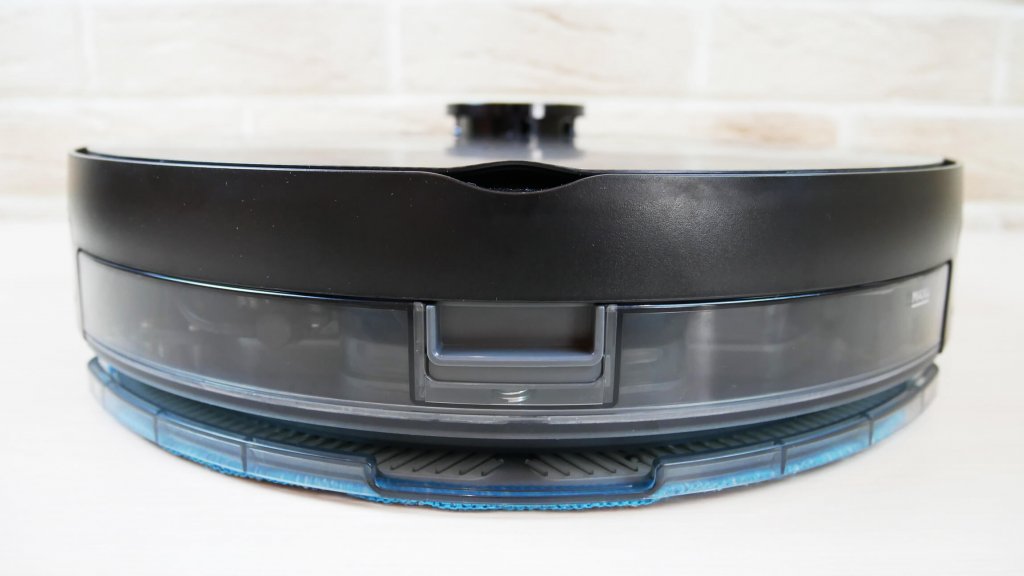
Let’s see how the robot is arranged from the bottom. It has 4 fall protection sensors. There are two side brushes, they are quick-detachable, three-beam, with pile brushes.
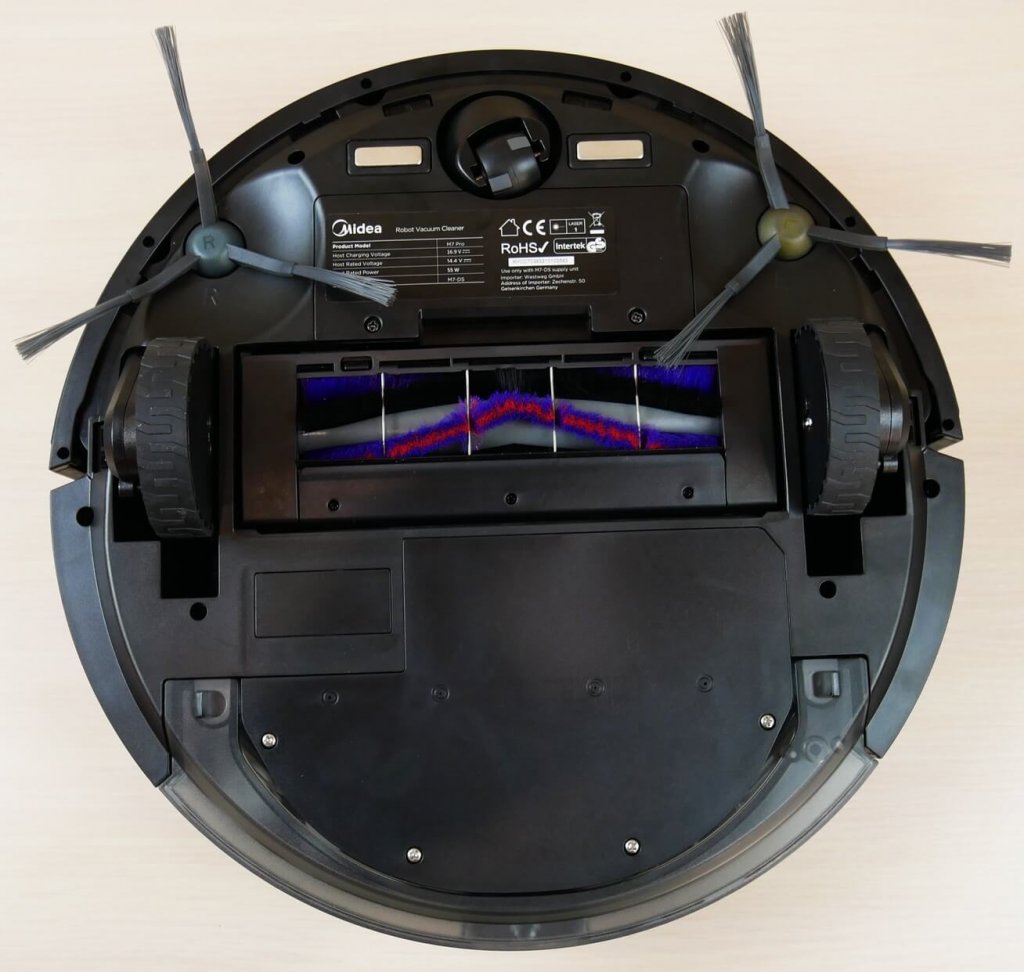
The central brush is made with inserts of different pile structures: soft and hard. On both sides, the caps are removed to clean the brush from wound hair and wool, which is a plus.
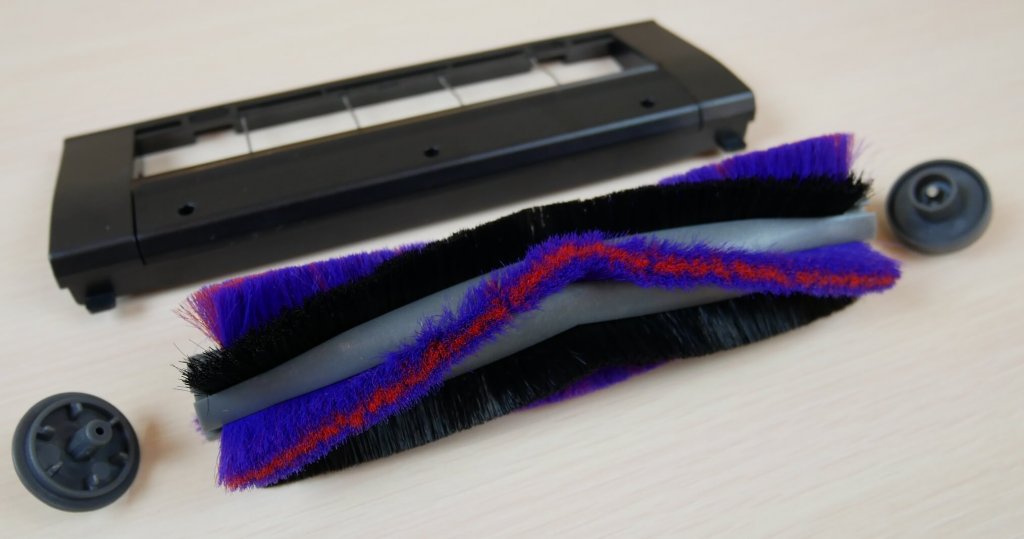
Water enters the mopping pad through 4 holes on the bottom of the robot. Mopping pad fastens with help of a pocket and flypapers. The fabric itself is not very thick. To attach the nozzle to the robot, you need to turn it over, which is not very inconvenient.

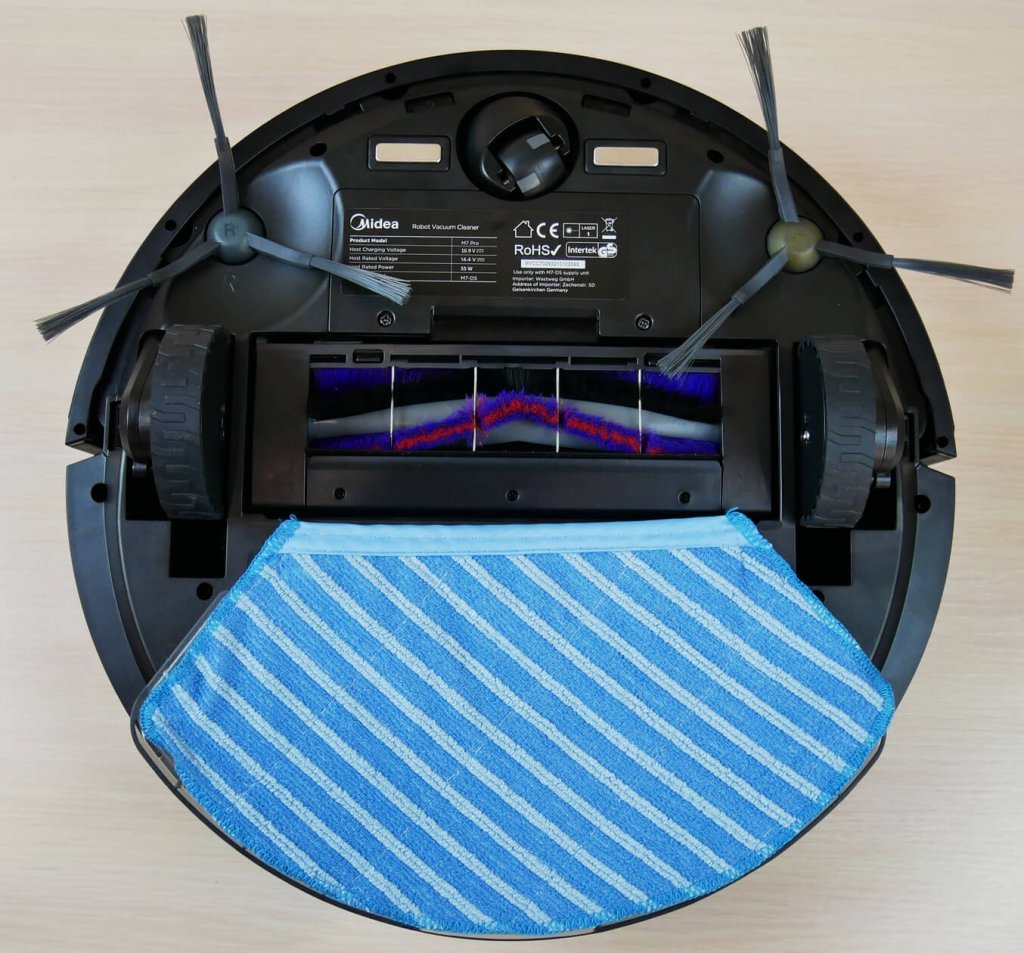
Instead of a conventional water tank with a fixed nozzle, you can install a special module with a vibrating mop. It also holds about 220-250 ml of water. An electric drive is installed inside, so mopping pad can move, as well as a pump for electronic adjustment of the water supply.
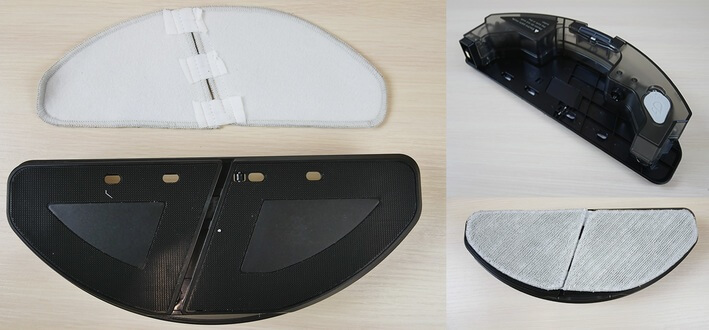
The mopping pad is divided into 2 parts and connected with rubber bands, attached to the platform with Velcro. The movements of the mopping pad are directed in opposite directions, imitating the movements of a person’s hands when rubbing dirt manually. How effective this system is, we will definitely check during the tests.
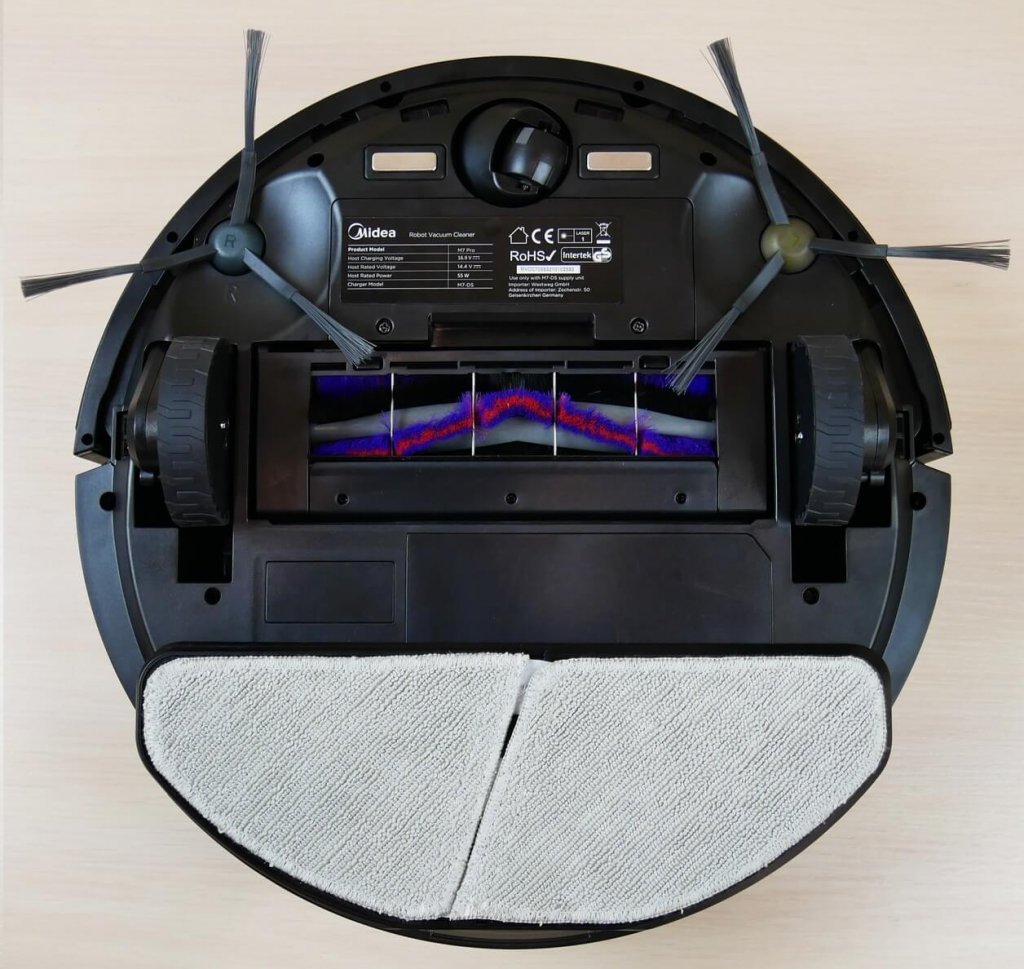
In general, the build quality of the robot is average, as for this price segment.
Specifications
The main characteristics of Midea M7 Pro, declared by the manufacturer:
- Battery Li-Ion 5200 mAh.
- Suction power up to 4000 Pa.
- Operating time up to 180 min.
- Cleaning area up to 250 sq.m.
- The capacity of a dust collector is 550 ml.
- The capacity of the water tank is 220 ml.
- Passage of obstacles up to 20 mm.
- Dimensions: 350*96 mm.
Here the most interesting, I would say, is the increased suction power, which we will check in real conditions.
Functionality
Let’s move on to the overview of Midea M7 Pro features. The robot vacuum cleaner is controlled via branded MSmartLife mobile application, which can be downloaded by scanning the QR code in the instructions. Registering and connecting the robot to the network should be easy, just follow the manufacturer’s instructions.
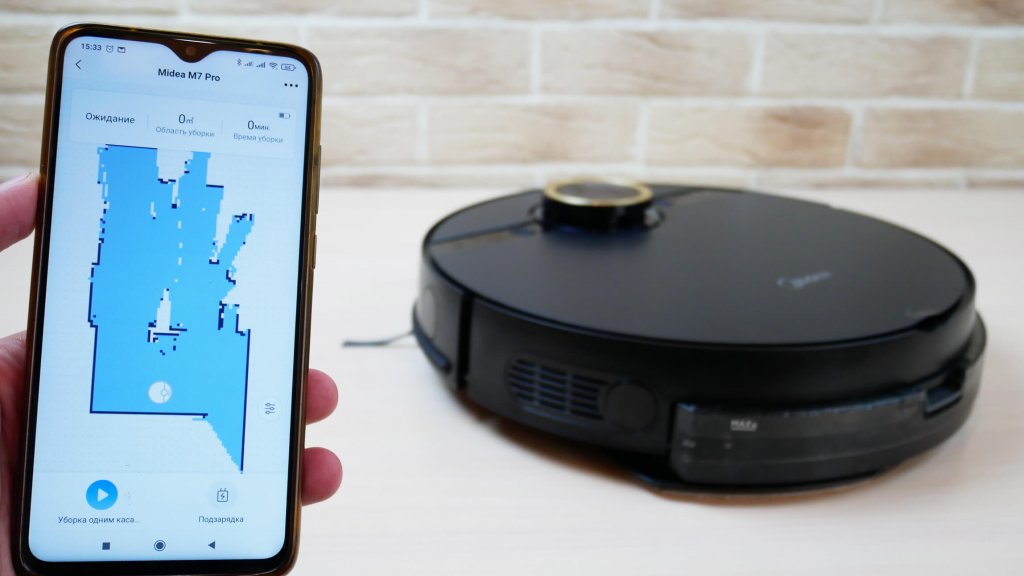
In the application on the main working panel, the robot builds a map of the room and saves it in memory. In the settings, you can turn on the map save mode, activate the function of automatically increasing power when driving on carpets, manually control the robot, and set the movement mode when the vibration mop is installed. The difference is that with effective cleaning, the robot moves in a denser snake.
You can also set up scheduled cleaning by choosing the time, days of the week, suction power, water level per mopping pad, and even select rooms to clean. You can adjust the volume and language of voice alerts.
Additionally, it is possible to set the time when the robot will not disturb you, view the cleaning log, track the status of consumables, update the firmware if necessary and study the help section.
Let’s go back to the main working panel. Here you can adjust the suction power and water supply, set up virtual walls and no-go zones, and even separate no-go zones for mopping. Select a point on the map where the robot should move for local cleaning, set cleaning zones with rectangles on the map, and even select the desired rooms for cleaning, as well as the number of passes by the robot (from 1 to 3).
Here is a nuance, despite the fact that the Midea M7 Pro automatically zones the area into rooms, you cannot manually edit the map by connecting several rooms into one or vice versa, dividing the room into zones. As a result, in my case, the robot split the map not into 5 rooms, as it looks like in reality, but into 3, combining several rooms into one. And there is no way to correct it manually, which is not very convenient. But at least you can name rooms. You should also note that Midea M7 Pro is able to store several maps in memory, which is especially important when cleaning houses with few floors.
These are all functions of the robot. In principle, the main features for automatically maintaining cleanliness in the house and flexible setting of the cleaning plan are presented.
Testing
Navigation
And finally, let’s move on to the tests. First, let’s check the Midea M7 Pro navigation in the room with obstacles. Initially, the robot passes the entire available area around the perimeter. The dryer caused him some inconvenience, but he was still able to get out of the trap on his own and continue cleaning. When cleaning with a snake, the robot was able to separately sweep around each leg of the chair and the box, after which it returned to the base. Test passed successfully.
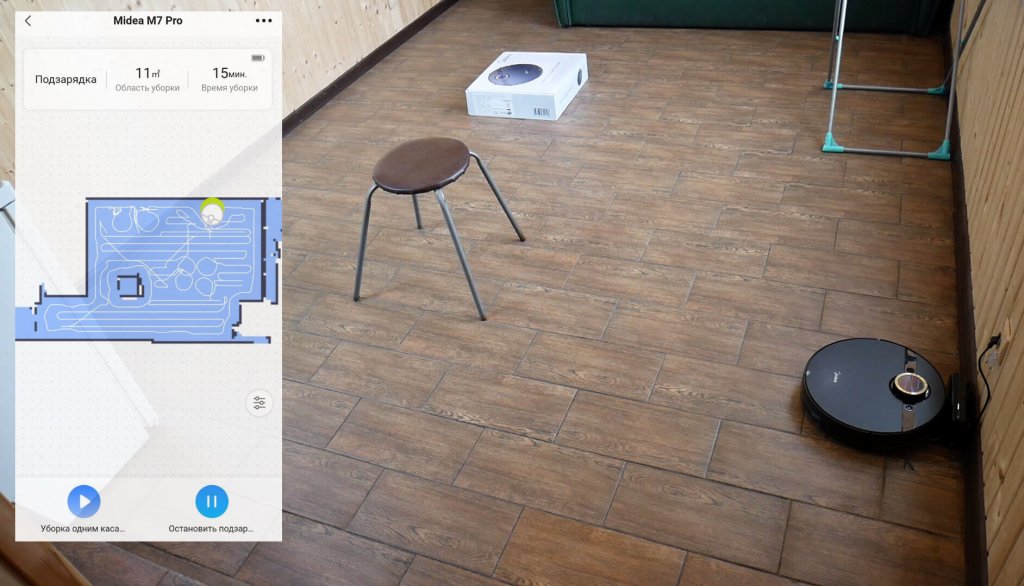
As for navigation within the entire house, even though the robot vacuum cleaner zoned the area into rooms, anyway during next launches, it divides the room into zones convenient for him, ignoring the original order. Cleaning first along the perimeter, and then with a snake move. As a result, he divided the house of 5 rooms into 6 zones, and even within one small room, he still divided it into 2 parts. This affects the speed of cleaning. In our case, the usable area is about 32 sq.m. the robot cleaned in 37 minutes, while most analogs with lidar cope with this task in 25-30 minutes, cleaning the entire room after room. So, we can say that the movement algorithm is not the most convenient and needs to be improved.
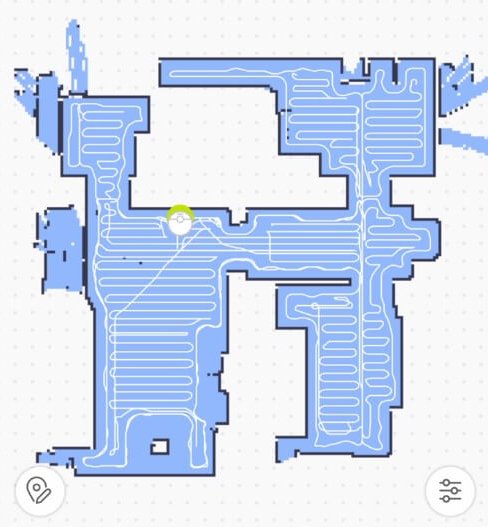
But in any case, there were no uncleaned areas left, and the robot coped with the task, so this test was also successfully passed. I would just like to add a few comments that were notices when testing the Midea M7 Pro within the home:
- The robot sometimes automatically increases power even when driving on a laminate. The carpet detection function is a bit “damp”.
- When cleaning around the perimeter, the robot moves through the base. If a wet mopping pad is installed on it, moisture will get on the base, which in the future can cause to it oxidation and failure of the base. This is not good.
- During the test, the maximum suction power was selected and almost half the battery charge was used up in 37 minutes. At maximum power, the robot will last for about 80 minutes, and this is actually a good indicator.
Suction power
Now let’s test the suction power of Midea M7 Pro. It cleaned the debris out of the 2mm and 4mm deep slots and was even able to partially suck the debris out of the 10mm slot.
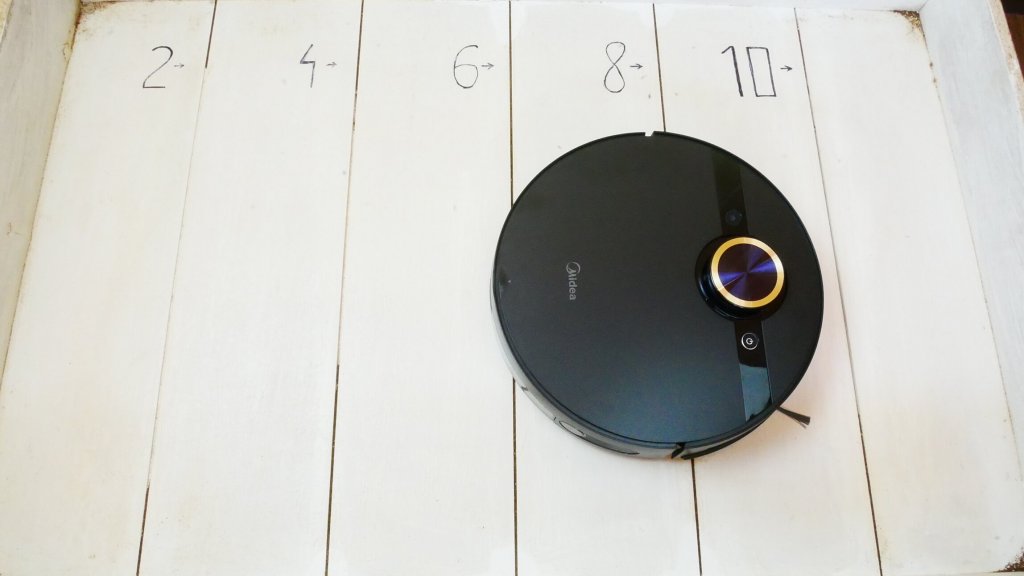
Of course, this robot can be called powerful, and if it would come to the review a bit earlier, it would certainly have entered our rating of the most powerful robot vacuum cleaners that we have ever tested.
Dry cleaning on laminate
The quality of dry cleaning is high, the robot collected all the garbage from the laminate, only a small part remained in the corners, from where round robot vacuum cleaners are not able to sweep the garbage.

At least most of the models that we had on the review. Most of the debris is collected in the dust collector. Wool and hair are wrapped around the central brush. Test passed successfully.
Carpet cleaning
Thanks to its high suction power and well-designed brushes, the robot picks up debris on the carpet well, making it deep cleaning. So there are also no complaints about the Midea M7 Pro.

Mopping
But in wet cleaning there are few comments. With a conventional water tank and a microfiber mopping pad installed, the robot doesn’t clean dirt very well, smearing dirt on the floor. And for everyday wet cleaning, this option is not very effective – the mopping pad does not evenly wet the floor and dry stripes remain after the passages.

But with the installed module with a vibrating mop, the robot really wipes off not only dirt, but also dried spots, almost at the level of robot polishers. In our case, it was sauce and spilled coffee, which we left for a day to dry. So, while using this module, the robot copes well with these tasks.


Passage of obstacles
Robot passes the sills with a height of 2 cm without any problems, as stated by the manufacturer.
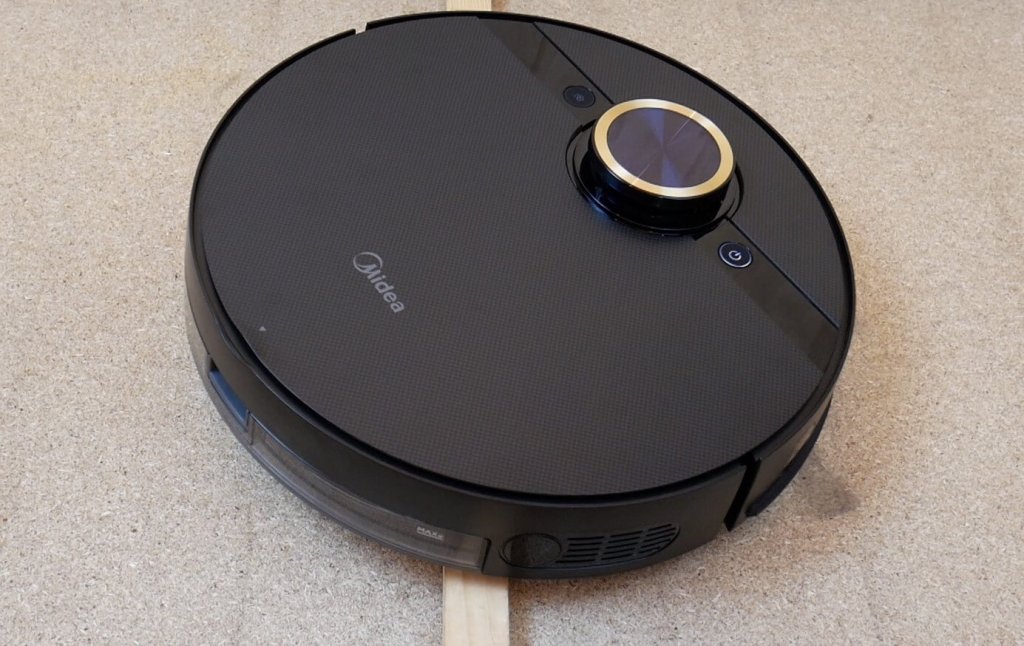
Dark Surfaces
There are also no problems with the passage of dark surfaces. The robot does not recognize them as height differences, which is a plus.
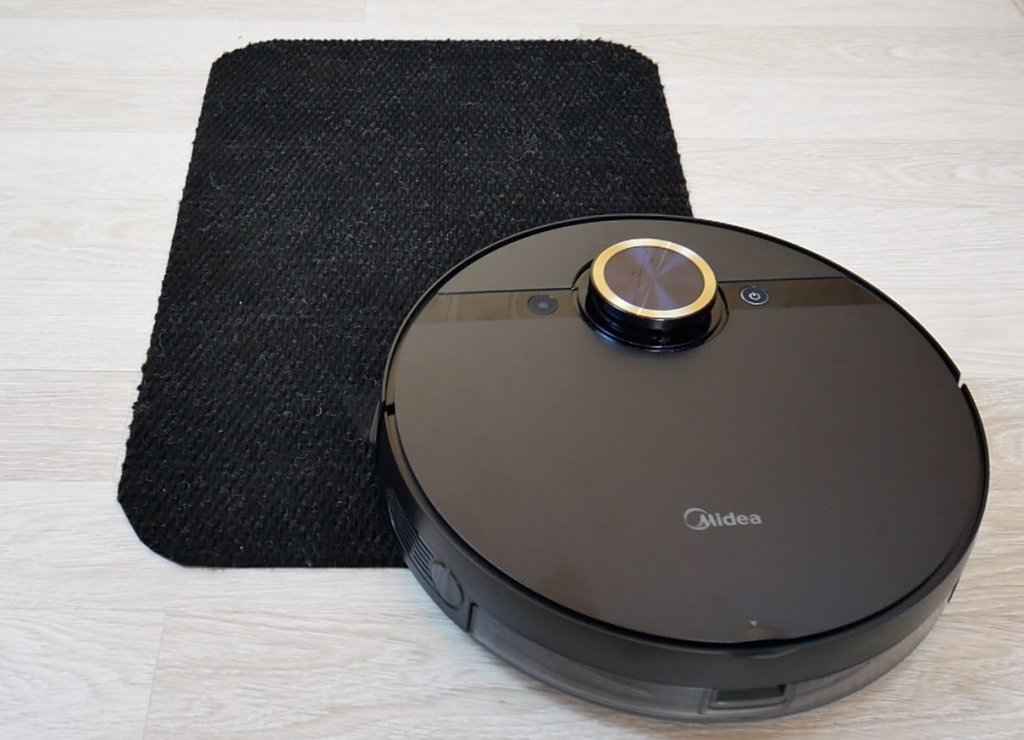
Noise level
And finally, we measure the noise level of Midea M7 Pro in different modes. In the wet cleaning (moping) mode with a standard tank at minimum power, the noise level is about 59 dB. In standard mode it reaches 63 dB, and at maximum power – 66 dB. At the same time, with the vibrating mop installed, the noise level is about 64-65 dB. This robot vacuum cleaner is not too noisy given the high suction power, which is a good thing!
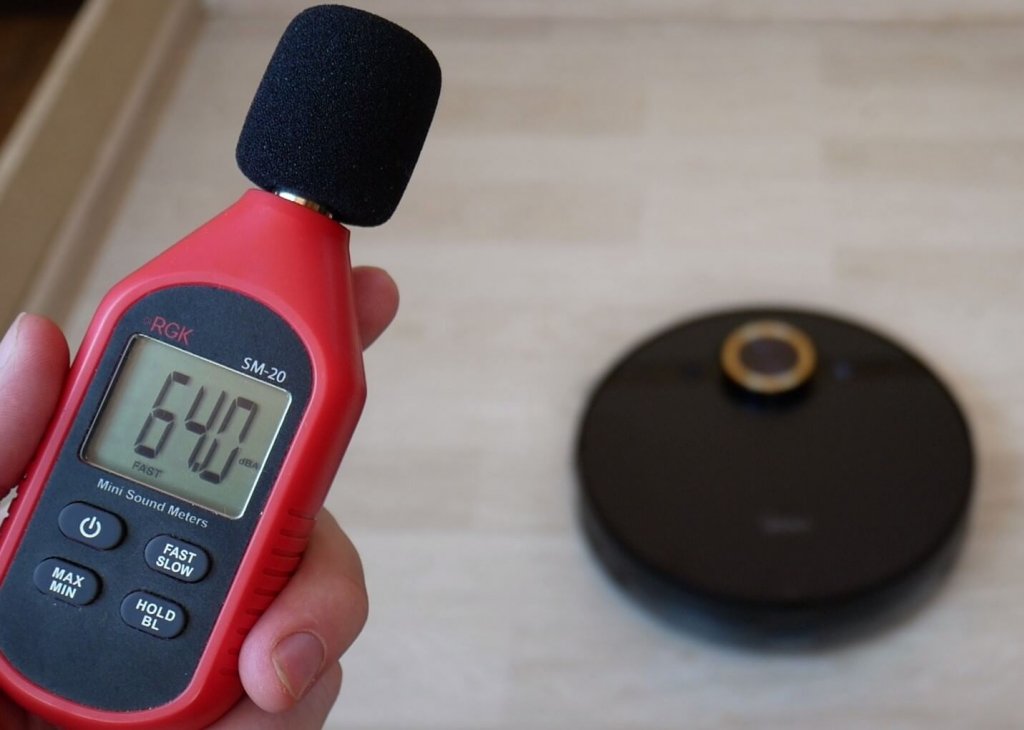
Summing up
Midea M7 Pro was reviewed and tested in detail. According to our rating system, he was able to score 73 out of 100 points. The result is high, so the robot can be recommended for purchase.
Overall rating of models that passed the Robotobzor test https://robotobzor.com/ratings/general-rating-of-robot-vacuum-cleaners.html.
Now I would like to share my personal opinion about this model, after a detailed review and testing.
What I liked:
- There is lidar and most of the advanced features in the app.
- The robot is equipped with a powerful engine.
- High quality of wiping off dirt with the installed module with a vibrating mop.
- The quality of dry cleaning is above average.
- Midea M7 Pro can vacuum and mop the floor at the same time.
- The device is not afraid of dark surfaces.
- Good passage of obstacles.
- The best price considering the design and functionality.
But this robot vacuum cleaner also has disadvantages, the main ones are:
- The robot runs onto the base while cleaning.
- The automatic power increase feature on carpets sometimes turns on with no reason on hard surfaces.
- Wet cleaning with a standard water tank installed is less effective compared to analogues.
As a result, the robot has its strengths and weaknesses, so it’s up to you to decide whether to choose it or not. In any case, Midea M7 Pro deserves attention thanks to its lidar, powerful suction and vibrating mop module. This is an interesting combination of constructive solutions, and most importantly, they are effective and cope with the tasks.
Here, I would like to end the review. If you have any questions, ask them in the comments. Happy tech shopping everyone!

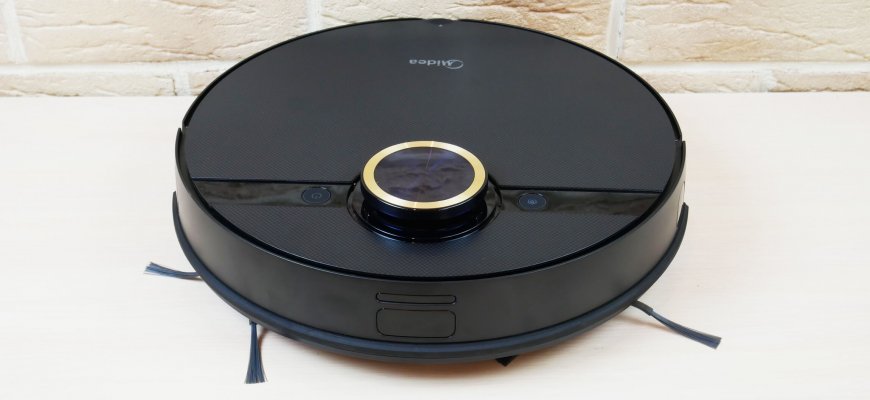
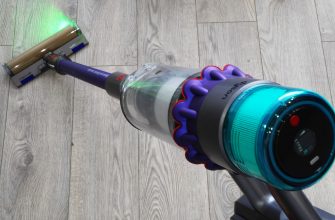
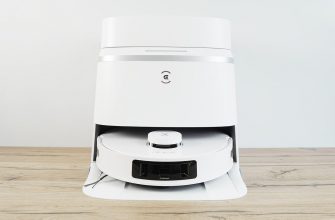
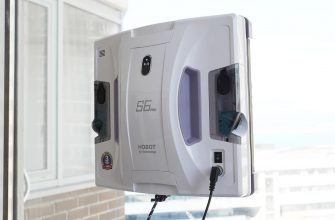

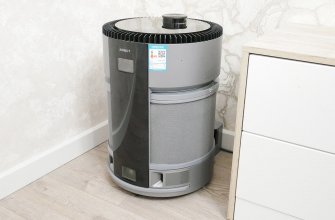
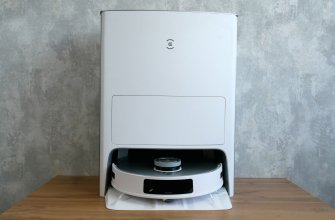
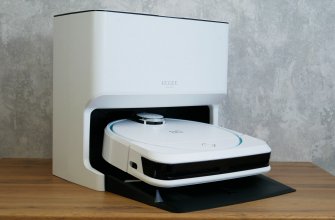

perfect review , all i wanted to see, thanks 🙂